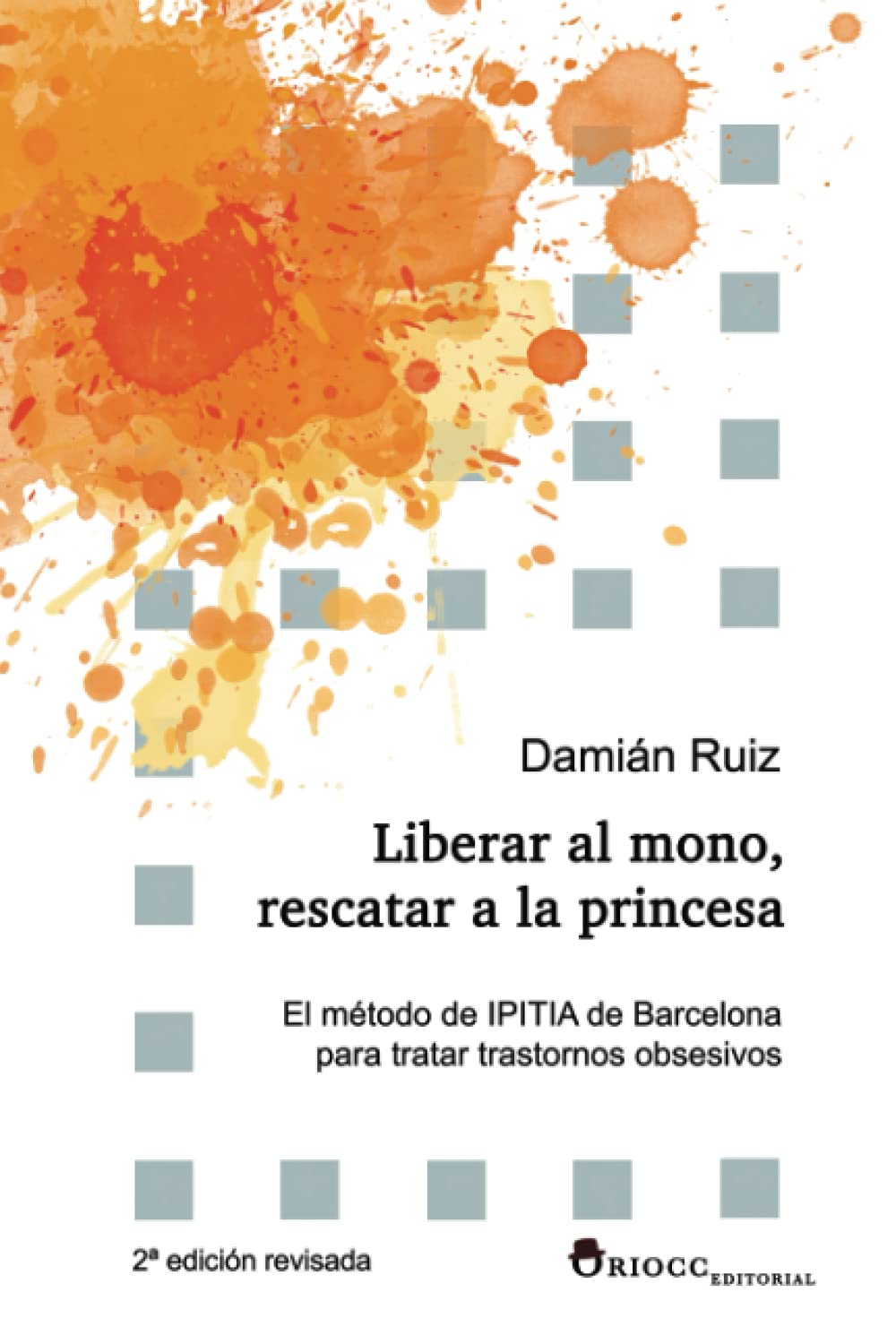This book, published in 2014 and revised two years ago, is my theoretical and practical proposal for the treatment of obsessive-compulsive disorder, compulsive or not.

In it, I explain from my own psychological perspective, based on theoretical research and clinical practice, how OCD arises, develops and can be significantly improved, even overcome in some cases.
After years of treating hundreds of patients, both I and the team of psychologists at IPITIA in Barcelona have been able to verify how many of the premises on which my theory is based work adequately in practice.
In “Freeing the monkey, saving the princess“, I talk about the traumatic circumstances that a person usually goes through, usually in childhood or adolescence, and that can be specific, such as a situation of sexual abuse, or long term, such as living in a hostile and aggressive family environment, and that, in addition to the genetic predisposition of each individual, can lead them to trigger an obsessive-compulsive disorder at a certain moment in their lives, when stressors appear, an obsessive-compulsive disorder.
I will then explain the different types of OCD that exist and that we treat, the most common of which is homosexual obsessional compulsive disorder, which mainly affects heterosexual men.
- As I always say, homosexuality is a minority sexual orientation, but it is as “normal” as heterosexuality or bisexuality. This means that when a person with a clear homosexual orientation comes to my practice or to the centre I run, but with an ego-dystonic orientation, i.e. “not accepting themselves”, we help them to do so and to fully integrate their orientation, both sexually and affectively, and to try to live it fully and satisfactorily. –
Compulsive content centred on guilt, aggression, pederasty, compulsion, cleanliness, religiousness, orderliness, etc. are common to many people who suffer from this disorder. And I write about all of this.
The book also discusses everything that can help to improve OCD. Since it is an anxiety disorder, as we consider it, unless we detect psychotic components (a minority of cases), if we manage to reduce the trait anxiety, that is, the anxiety that underlies the person’s psychic structure, and that in an internal study that we have done at a statistical level and that I myself have presented at the European Psychology Congress in Moscow in 2019, we have shown that it is possible. Using a test-retest methodology, we were able to show, in a preliminary way, that OCD begins to diminish symptomatically.
I also write about activities, exercises and other recommendations that the patient can do on their own to start working on improving their disorder, but it is always advisable to carry out psychological therapy combined, at least in the first phase, with pharmacological therapy (guided by a psychiatrist) to combat this disorder.
“Freeing the monkey, saving the princess” is an informative text aimed at people suffering from obsessive-compulsive disorder, their families and the health professionals who treat them, offering a different, eclectic and integrative perspective, based, as I have already said, on theoretical research in which I have been particularly involved in the study of primate behaviour (primatology), the bio-psycho-social theory of Theodore Millon, and what has been my main training object, the theoretical-practical study of the work of Carl G. Jung, which led me to become a psychoanalyst.
I respect, as I always say and as it could not be otherwise, the cognitive-behavioural line, but I do not ascribe to it as a psychologist, nor do I personally believe in the principles that support it (not only at the psychological level, but also at the conceptual, existential or philosophical level), no matter how official it is or pretends to be. And I insist, I have friends, colleagues who practice it, who know how I think and whom I respect deeply.
My concept of the human being includes much more than a rational brain and the behaviour it articulates. There is phylogenetics, ontogenetics and, in my view, an essential archetype which, in the case of dissonance with reality, explains the disorder much better than a rigid belief in an organic materialism which condemns the sufferer.
At the very least, this book offers a different and alternative view of OCD and, for those who feel reflected and identified with everything I have written in it, a possibility of improvement.
Damián Ruiz
